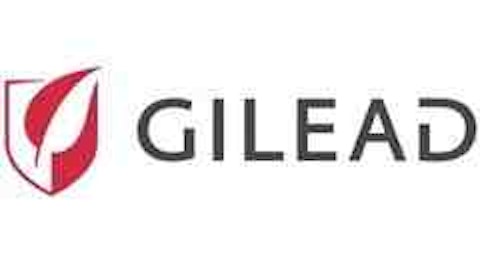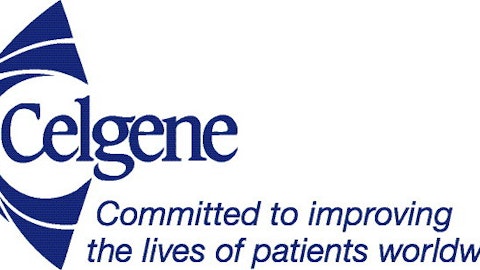With the Nasdaq Biotechnology Index hitting record highs, Motley Fool health care analyst Max Macaluso and Fool contributor Brian Orelli sat down to chat about whether we’re in a biotech bubble. Their conversation follows:

Brian Orelli: There are a couple of biotech indexes: the AMEX Biotech index (^BTK) and the Nasdaq Biotechnology Index (^NBI). And then there are some ETFs that track those funds or another basket of companies they’ve created, the SPDR S&P Biotech (ETF) (NYSEARCA:XBI), iShares NASDAQ Biotechnology Index (ETF) (NASDAQ:IBB), and First Trust NYSE Arca Biotchnlgy Indx Fd (NYSEARCA:FBT)for example.
I think most people follow the NBI or the iShares ETF that tracks it.
Macaluso: The Dow Jones Industrial Average is hovering near an all-time high. Is the NBI also hitting record highs?
Orelli: It just hit a record high, but we have to go further back than 2007 — the last time the Dow was at an all-time high. The NBI was at this level back in 2000. Like the dot-com bubble, the biotech bubble burst, and it’s taken us this long to recover.
Macaluso: You’re drawing an eerie parallel here… do you think we’re in another biotech bubble right now?
Orelli: I don’t think we’re in a bubble. I was still in grad school during the last one, so I wasn’t covering the sector as closely as I do now, but I remember the euphoria for biotech. In contrast, I don’t think valuations are over the top today.
Keep in mind that overall value should go up over time. Companies are pumping billions of dollars into R&D. That should be creating more valuable companies. If it isn’t, we have a problem.
Macaluso: So if valuations across the industry aren’t inflated at the moment, what’s behind the biotech industry’s incredible run lately?
Orelli: The index has run up in large part because of a couple of key components that make up a large portion of the index.Regeneron Pharmaceuticals Inc (NASDAQ:REGN) for instance is over 8% of the index. Its macular degeneration drug, Eylea, has been selling better than investors — and the company for that matter — had expected. Shares are up over 50% over the last year.Gilead Sciences, Inc. (NASDAQ:GILD) has almost doubled over the last year as investors have high hopes for its hepatitis C franchise.
That’s the thing about indexes. There are 119 companies in the NBI. Euphoria for all the little guys can move the index, but so can monster moves by a few of the big companies. Those might be overvalued now — it depends on whether Regeneron can develop more drugs and, for Gilead Sciences, Inc. (NASDAQ:GILD), whether the hepatitis C market is as large as people think it is — but even if they fall a little, we won’t have a bubble burst like we did in 2000 when the index fell 70% over the course of two years.
Macaluso: Regeneron and Gilead Sciences, Inc. (NASDAQ:GILD) are two of the biggest biotech success stories from last year, but what about the losers in this industry? When a small biotech with one drug in development receives an FDA rejection, for instance, it can lose 80% or more of its value overnight. How do cases like this affect the NBI?
Orelli: Of course, but it’s only 1% of the index or so, so it’s not going to move the needle so much. The index has listing requirements: $100 million in market cap and 50,000 shares average daily trading volume. Companies come and go, generally twice a year. At the change in November, the index added six companies and took out two. Interestingly, Xoma Corp (NASDAQ:XOMA) was one of the companies added. That biotech has been around forever. It presented at the first JPMorgan Healthcare Conference — back when it was called the Hambrecht & Quist conference — 30 years ago. It got kicked out of the index in 2000, but it’s back now.
On the other side, the index also rebalances when companies get too big, scaling back their percentage of the index. So while the index has been flat since 2000, Celgene Corporation (NASDAQ:CELG) is up 880% thanks to its cancer drugs Thalomid and Revlamid, and more recently Abraxane and Vidaza. But its impact hasn’t been fully felt by the index.
Macaluso: This rebalancing system seems to make the index a pretty good proxy for the broader biotech industry. So when investors consider this, do you think it’s better to invest in a biotech-focused ETF that tracks the market, or should investors do in-depth research and try to find the next success story like Celgene Corporation (NASDAQ:CELG) or Regeneron?
Orelli: It depends on your risk tolerance, really. Those blowups aren’t going to hurt you that much, but when they double overnight due to good news like an FDA approval, the ETF is hardly going to move.
Just to give an example, Sarepta Therapeutics Inc (NASDAQ:SRPT) more than tripled on one day last October after announcing outstanding data for eteplirsen, its Duchenne muscular dystrophy drug. The NBI on that day went up a paltry 0.7%!
Personally, I think it makes sense to get your safety elsewhere — buy an S&P 500 index fund or something — and then have a portion of your portfolio dedicated to a few biotechs that you know well.
Macaluso: I think that’s great advice, and since you brought up Sarepta, do you have any thoughts on this stock? Everyone is hoping for better treatments for Duchenne muscular dystrophy, but this is definitely a speculative stock.
Orelli: Speculative in the short term, for sure. The trial that sent the shares skyrocketing was only a small phase 2. The Duchenne muscular dystrophy patients that usually deteriorate over time actually walked further when taking the drug.
The next big question is whether the FDA will allow Sarepta to apply for an accelerated approval or require the biotech to do a phase 3 before approving it. A few years ago, I would have said there was no chance for approval with the limited data, but the FDA has been getting more lax — just look at the recent approval of obesity drugs, for instance — so I wouldn’t say it’s impossible. Not guaranteed, but not a long shot, either.
I like the company and the drug, but if you’re going to own it now, you have to be prepared for a drop if the FDA says it wants to see more data before Sarepta even submits its marketing application. Of course, since it’s not guaranteed, there’s upside if Sarepta says the FDA encouraged it to apply for accelerated approval.
Macaluso: Thanks for your insight, Brian.
The article Is This the Next Investing Bubble? originally appeared on Fool.com.
Fool contributor Brian Orelli, Ph.D. and Max Macaluso, Ph.D. have no position in any stocks mentioned. The Motley Fool recommends Gilead Sciences.
Copyright © 1995 – 2013 The Motley Fool, LLC. All rights reserved. The Motley Fool has a disclosure policy.

